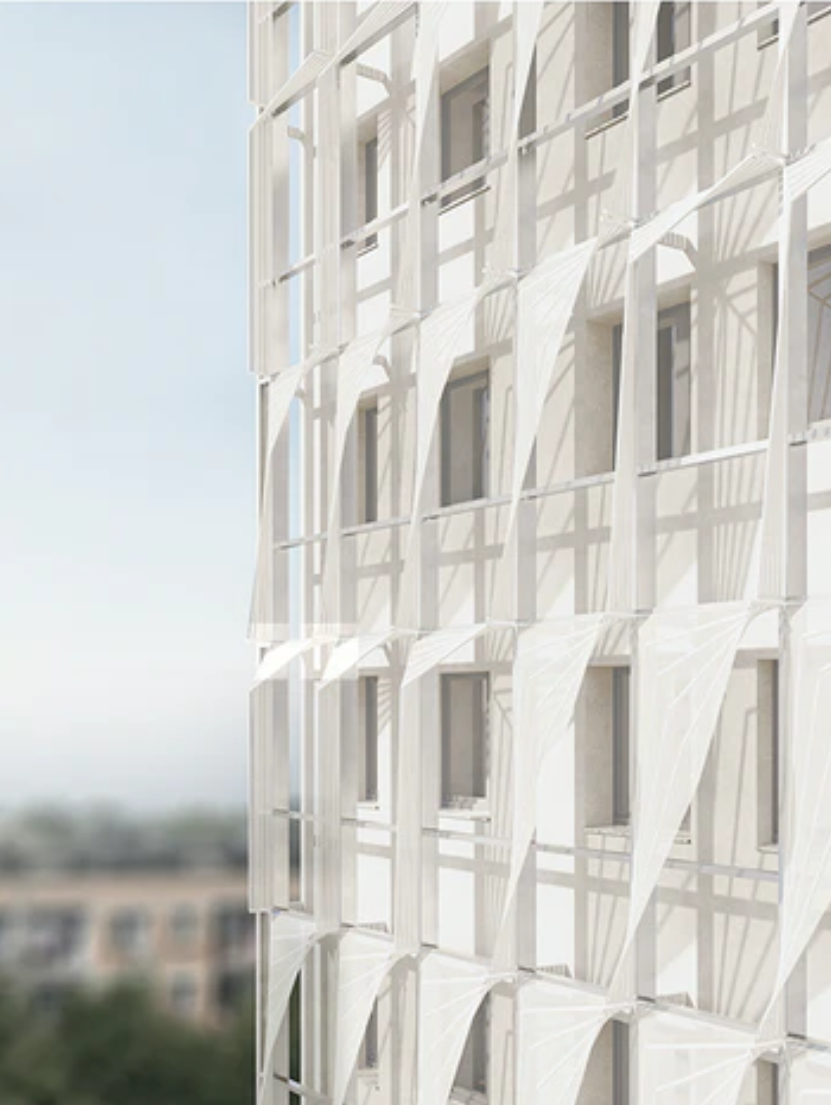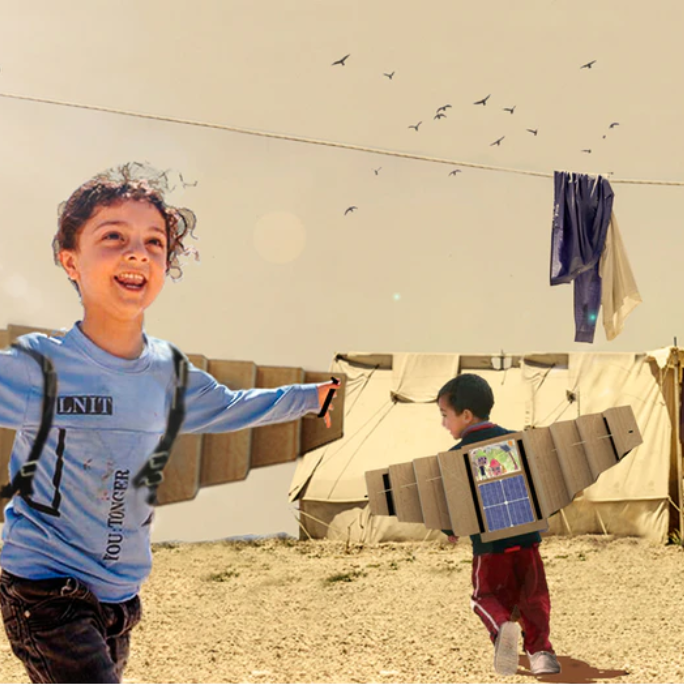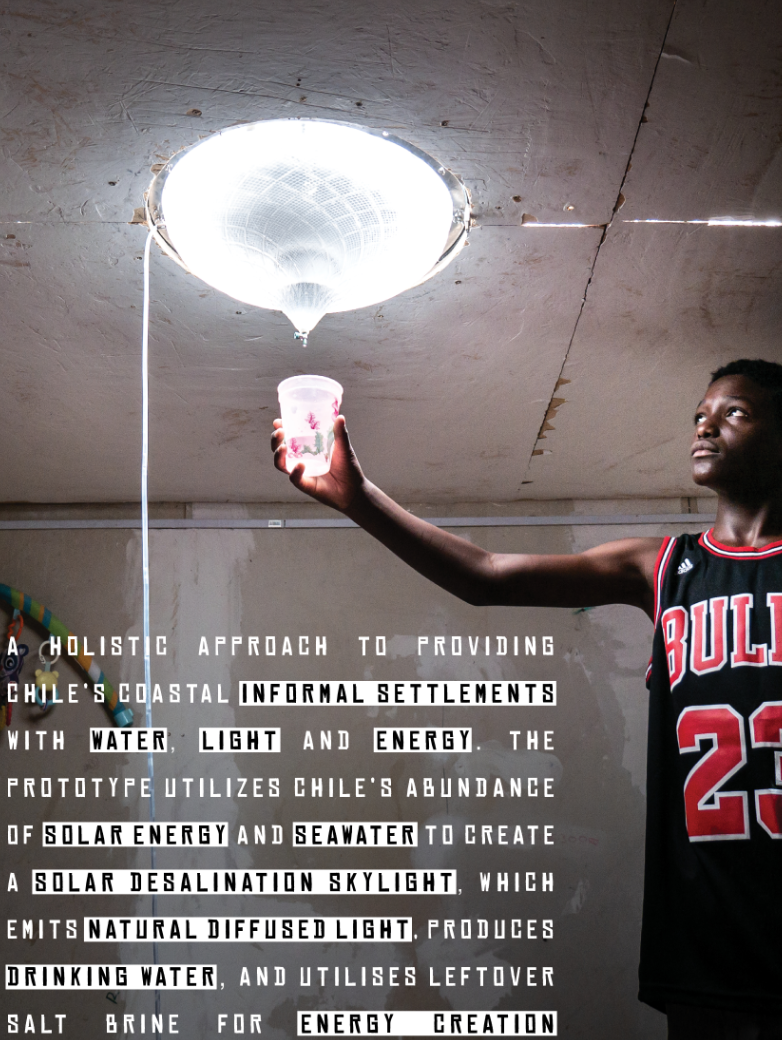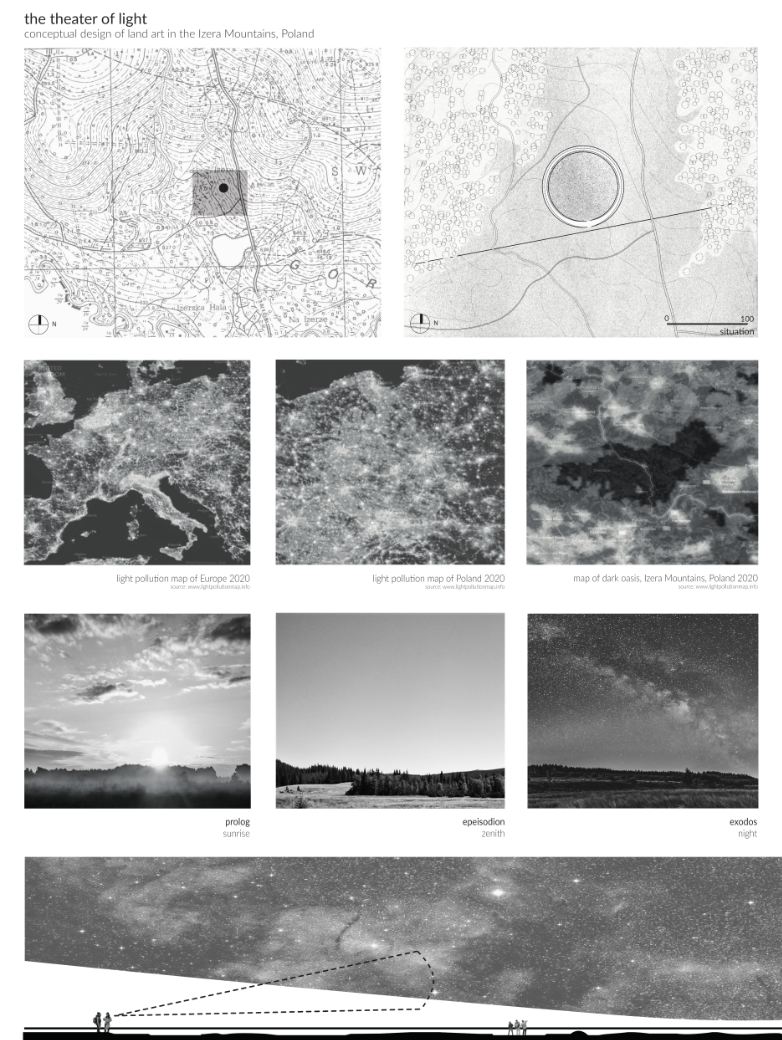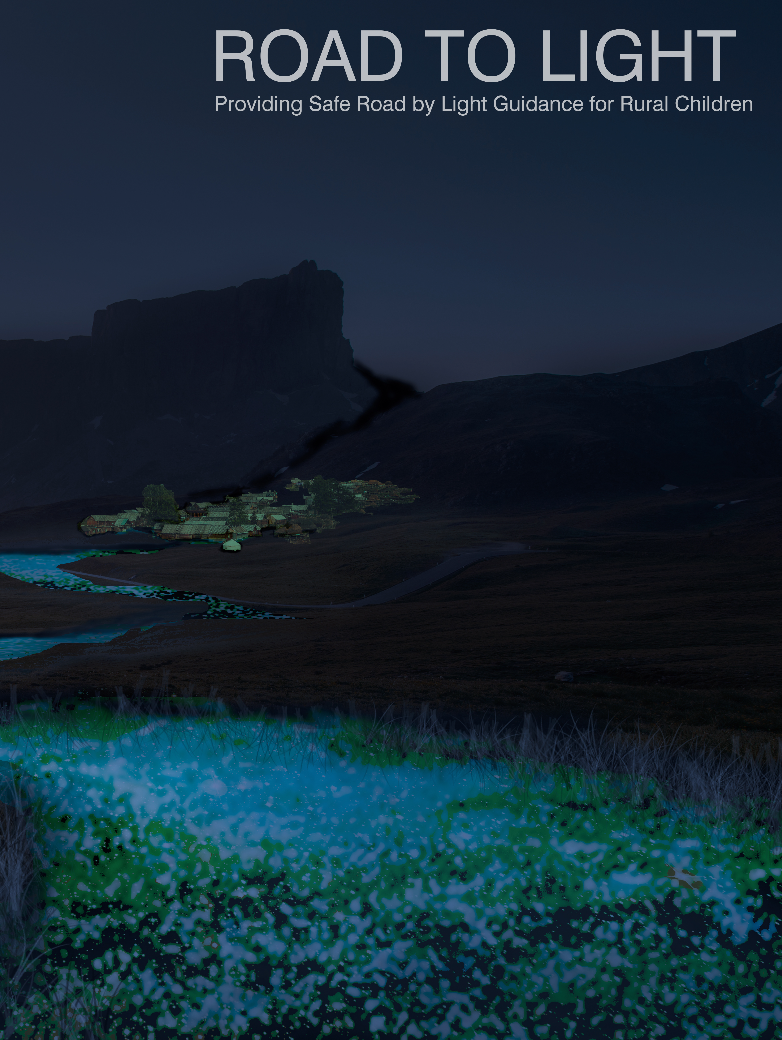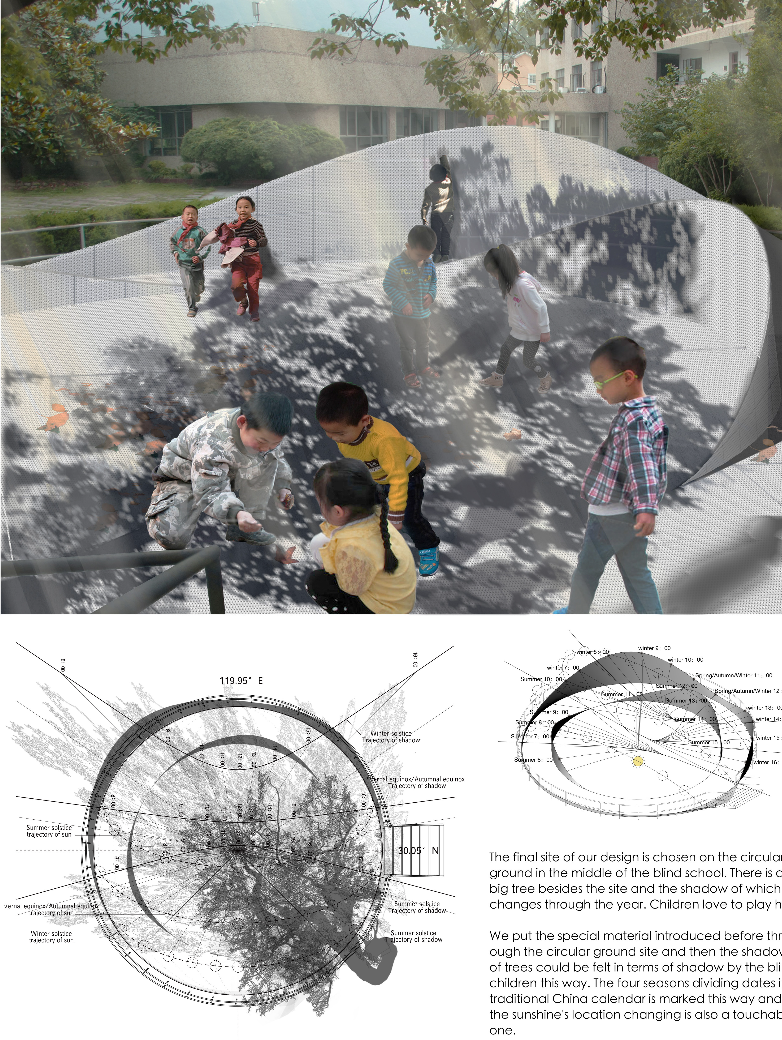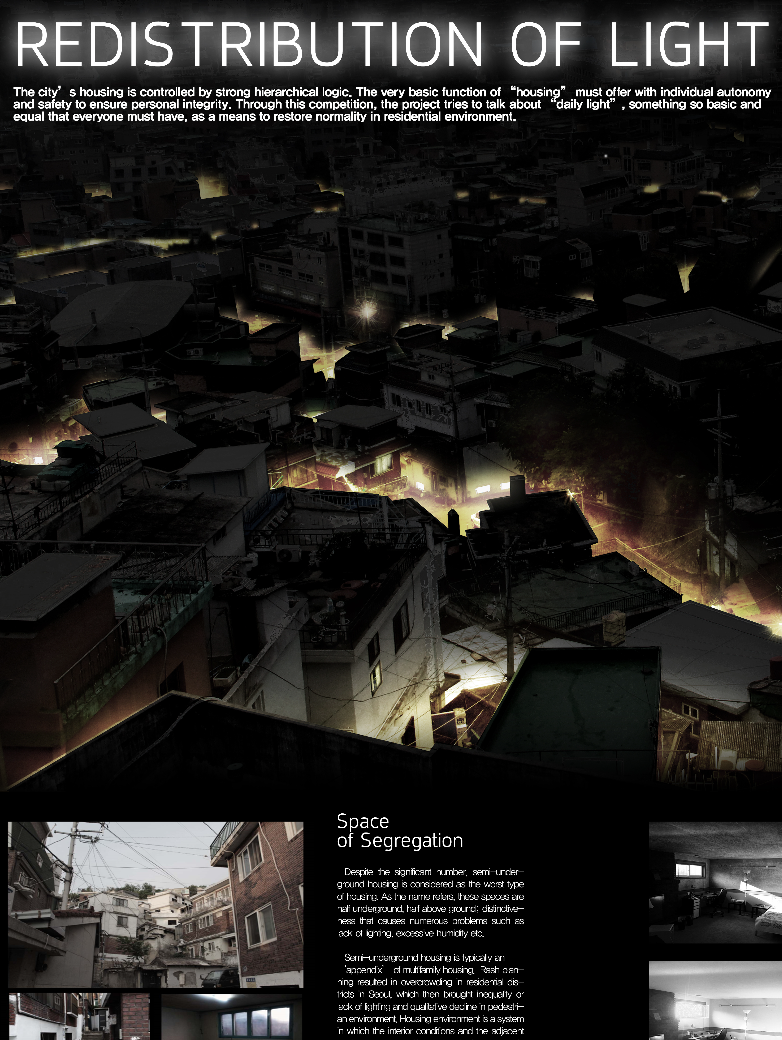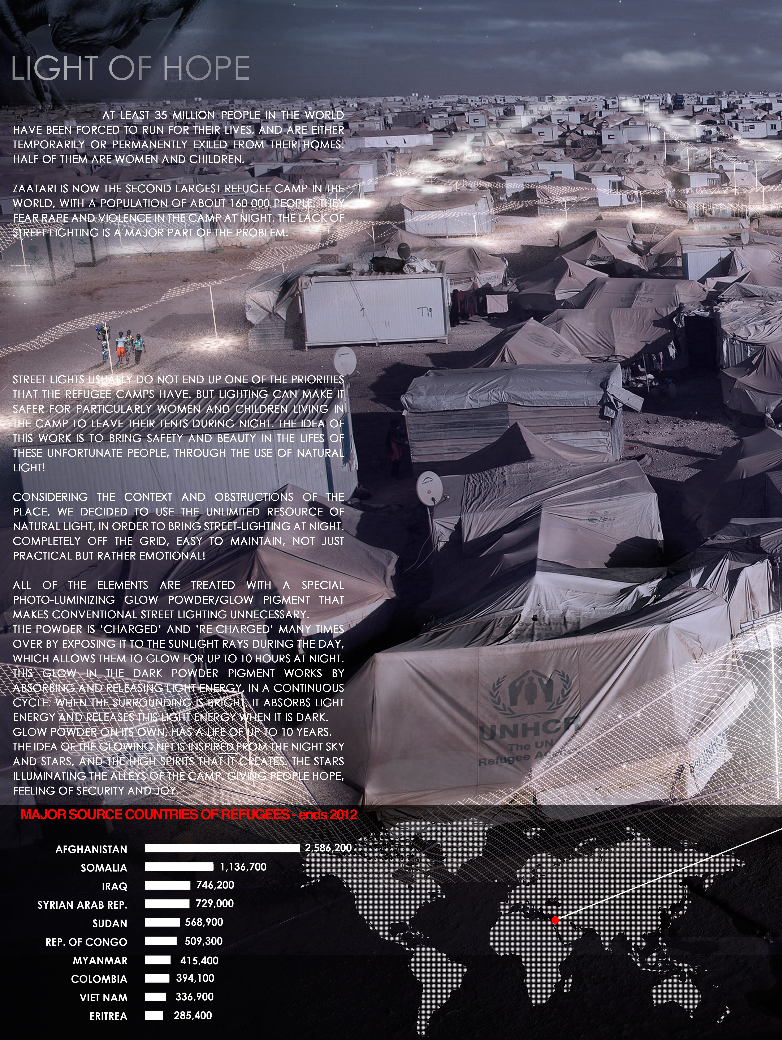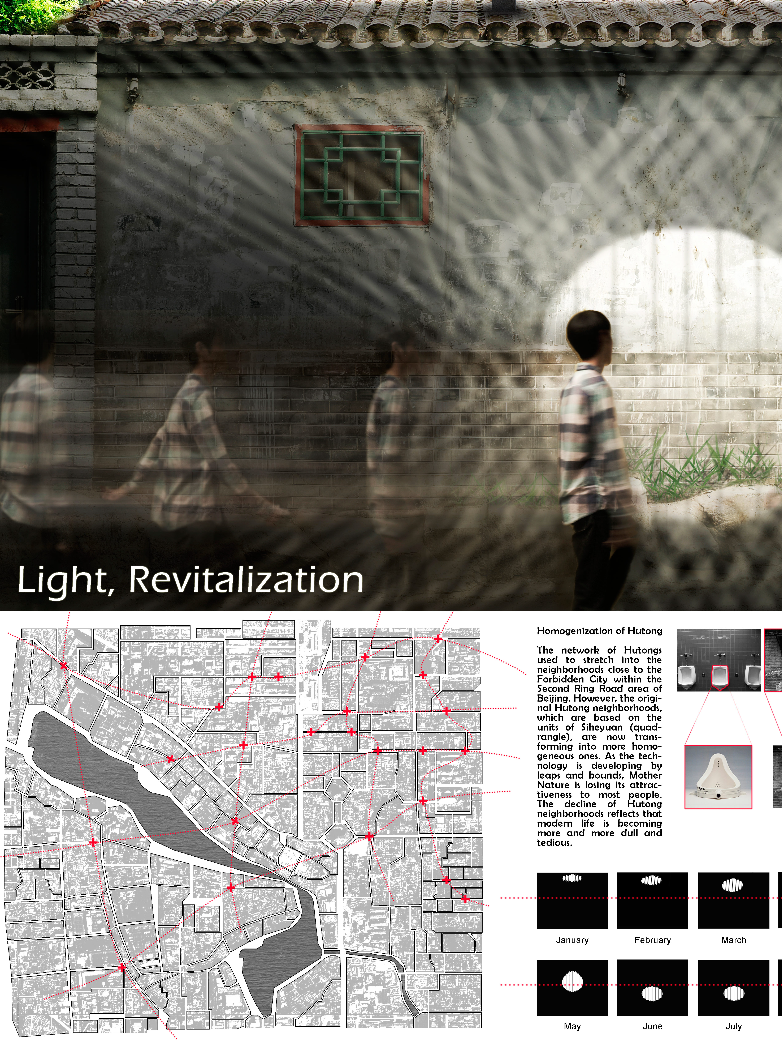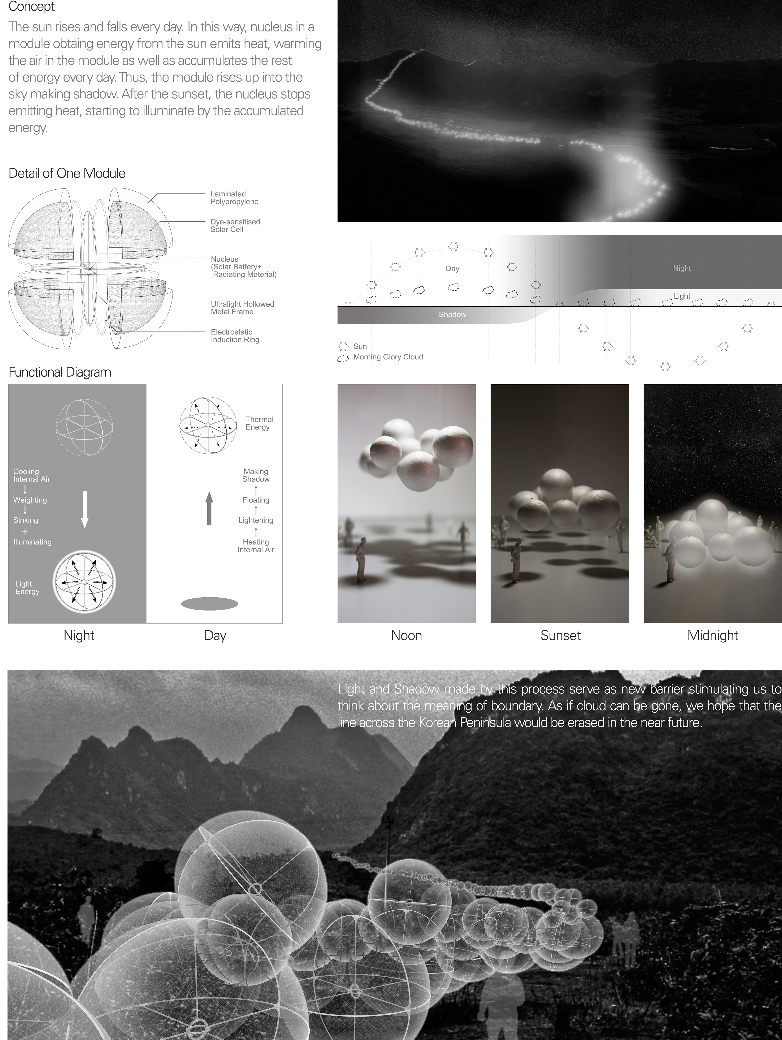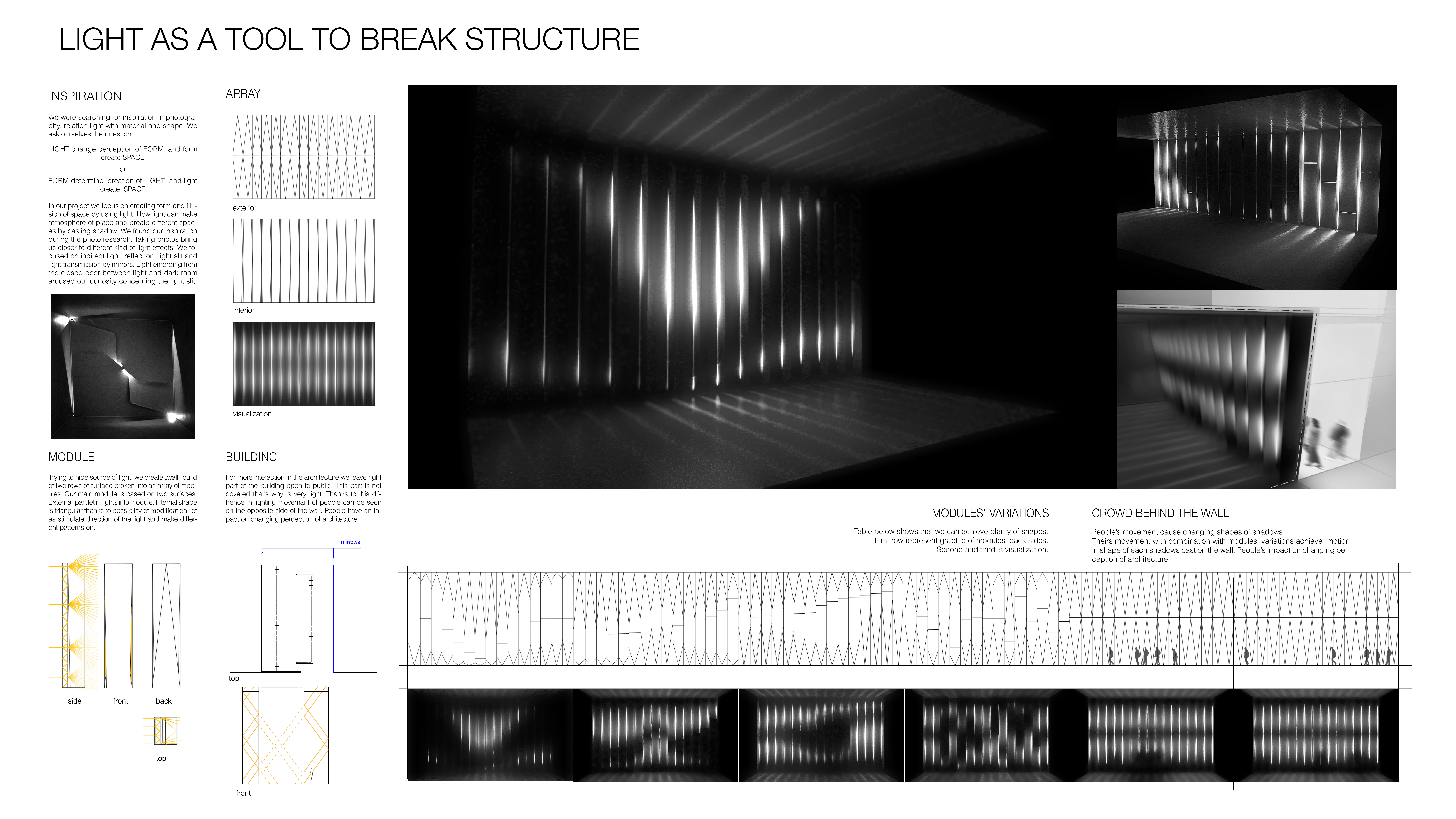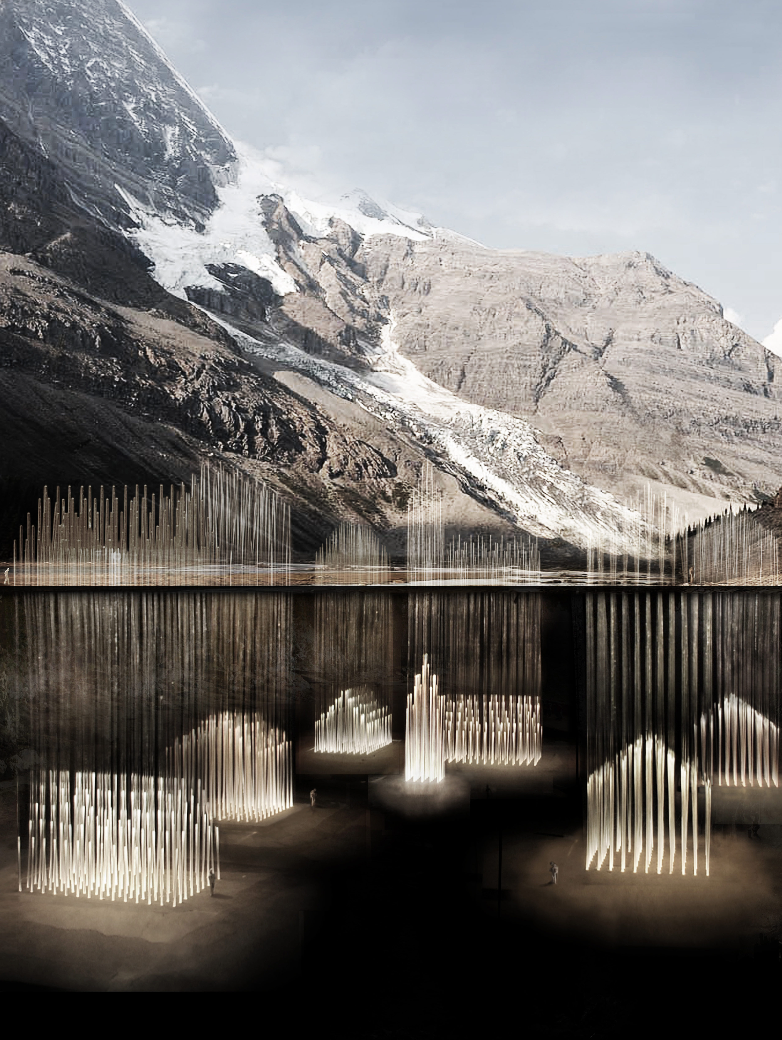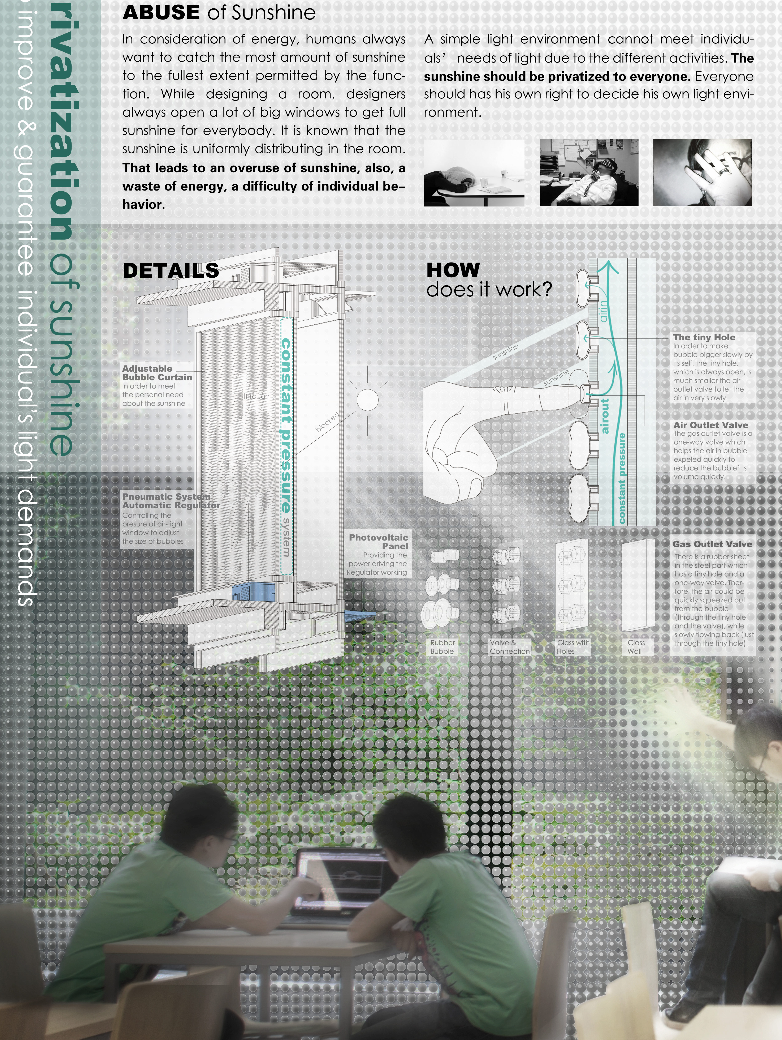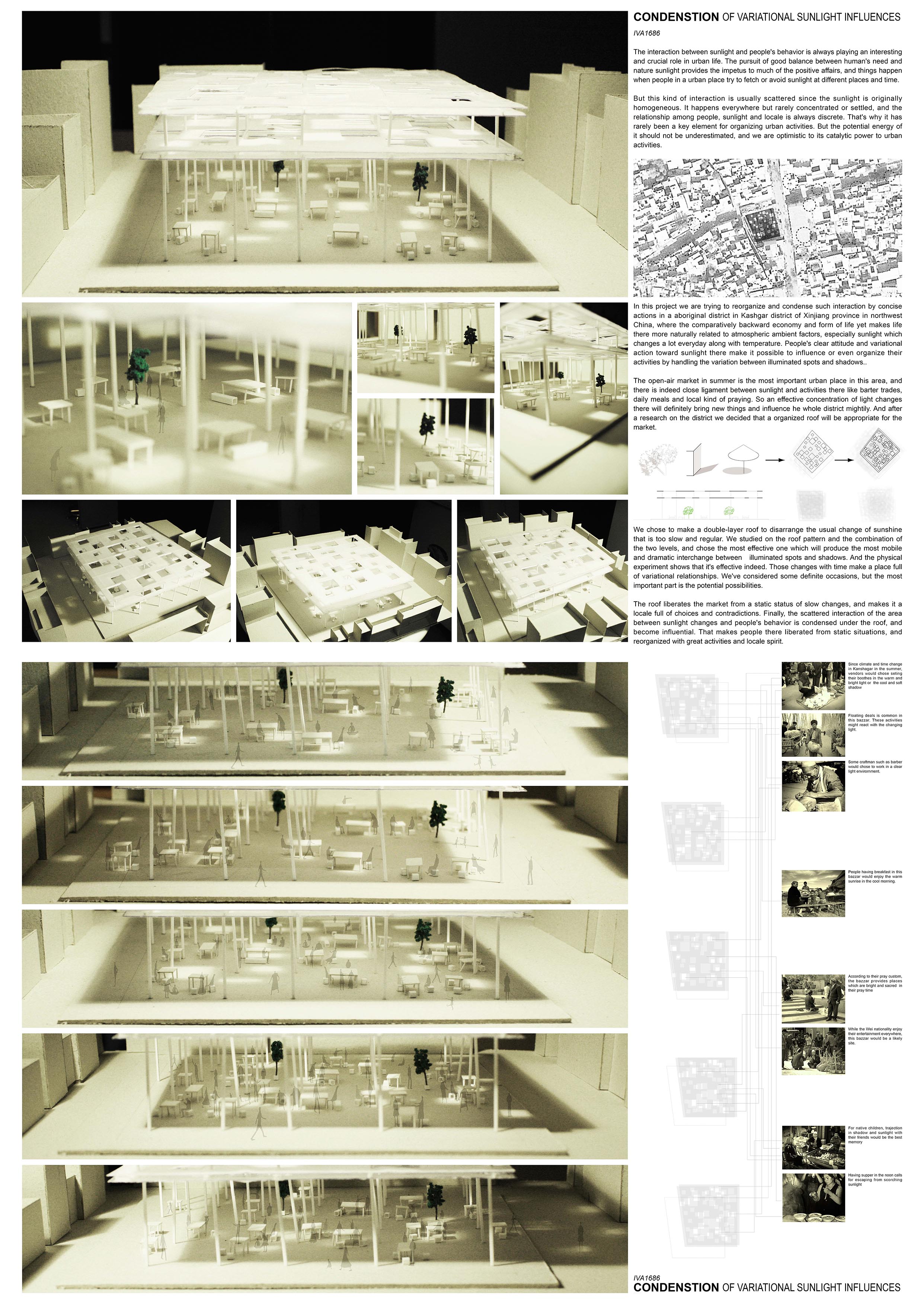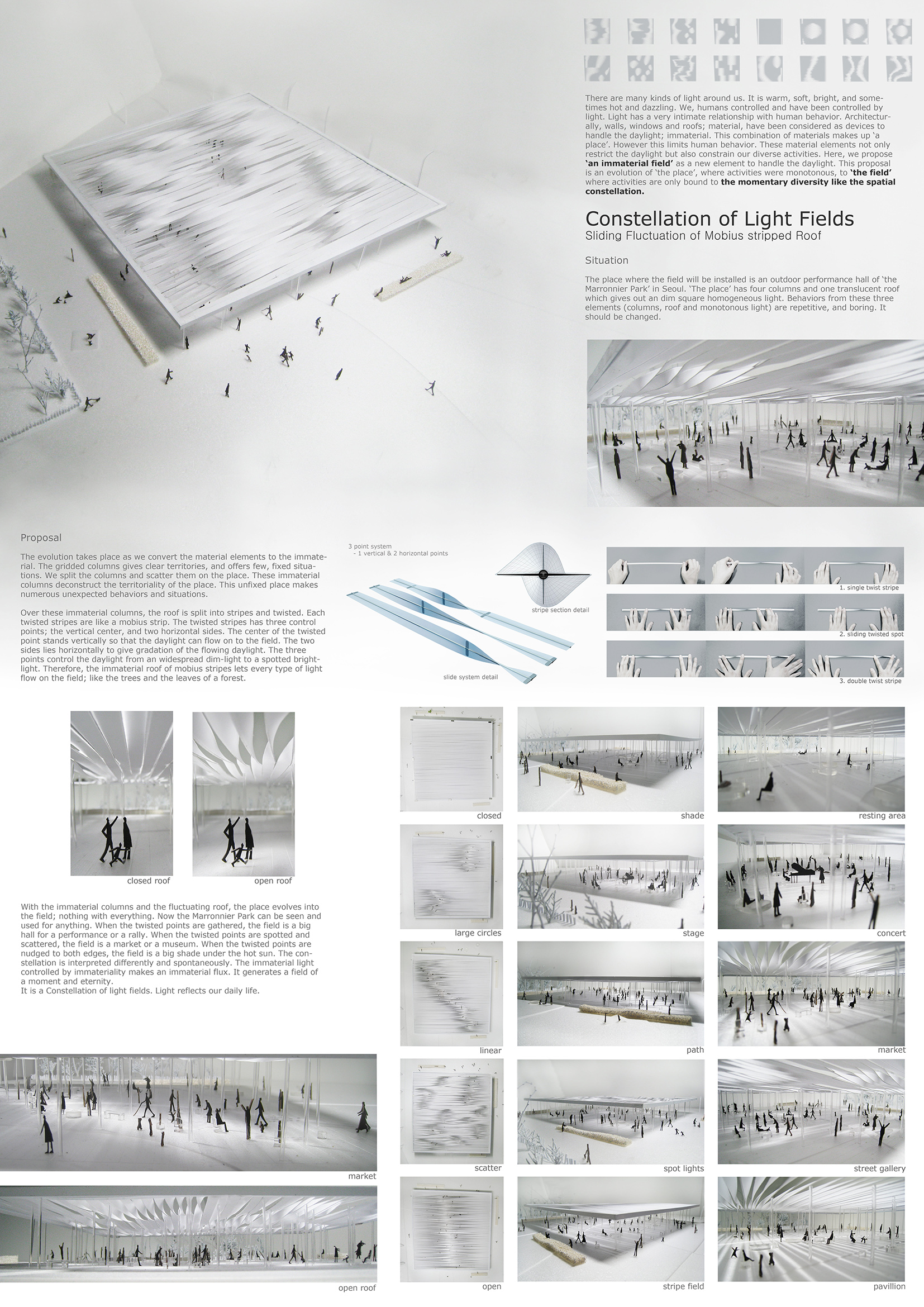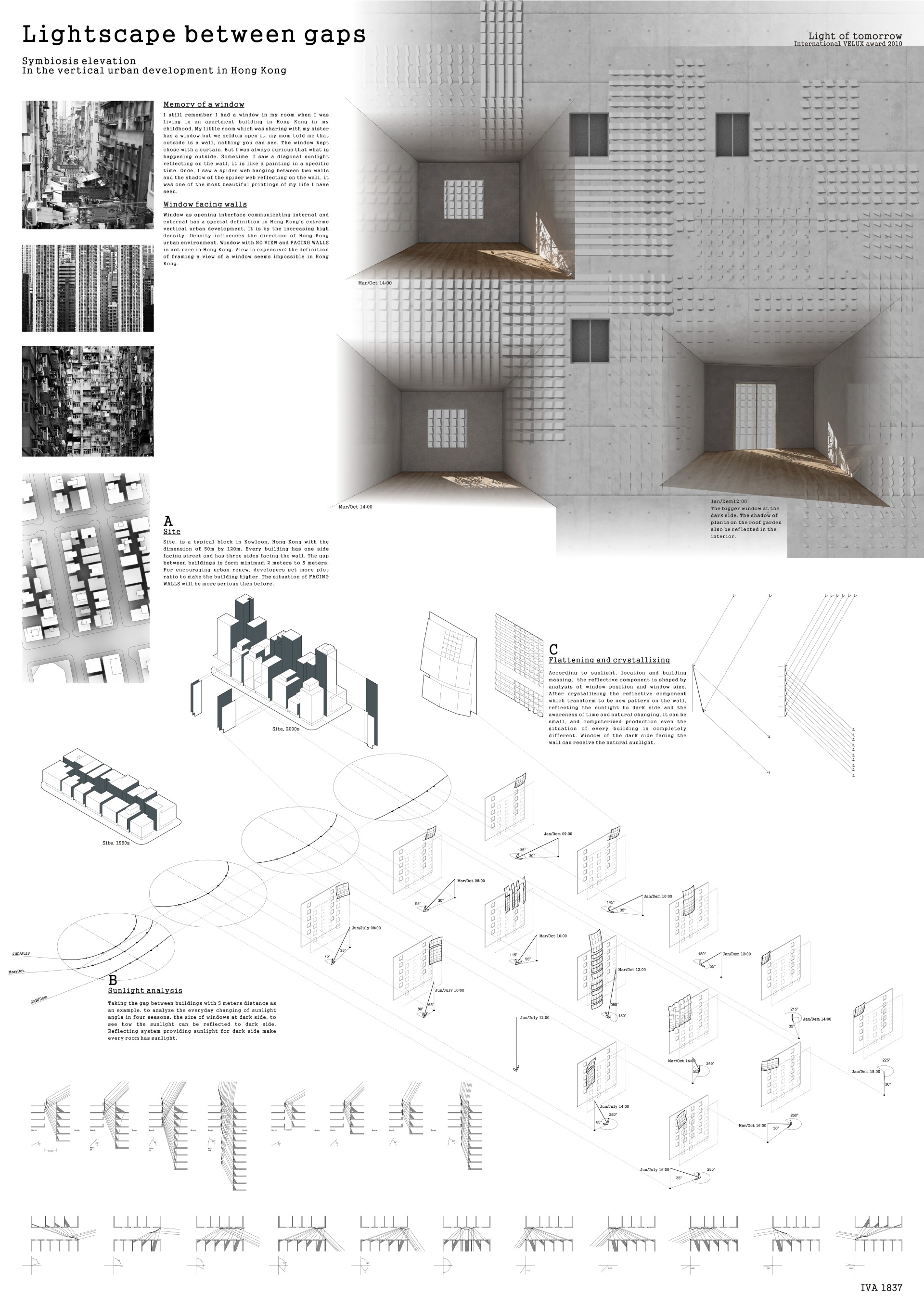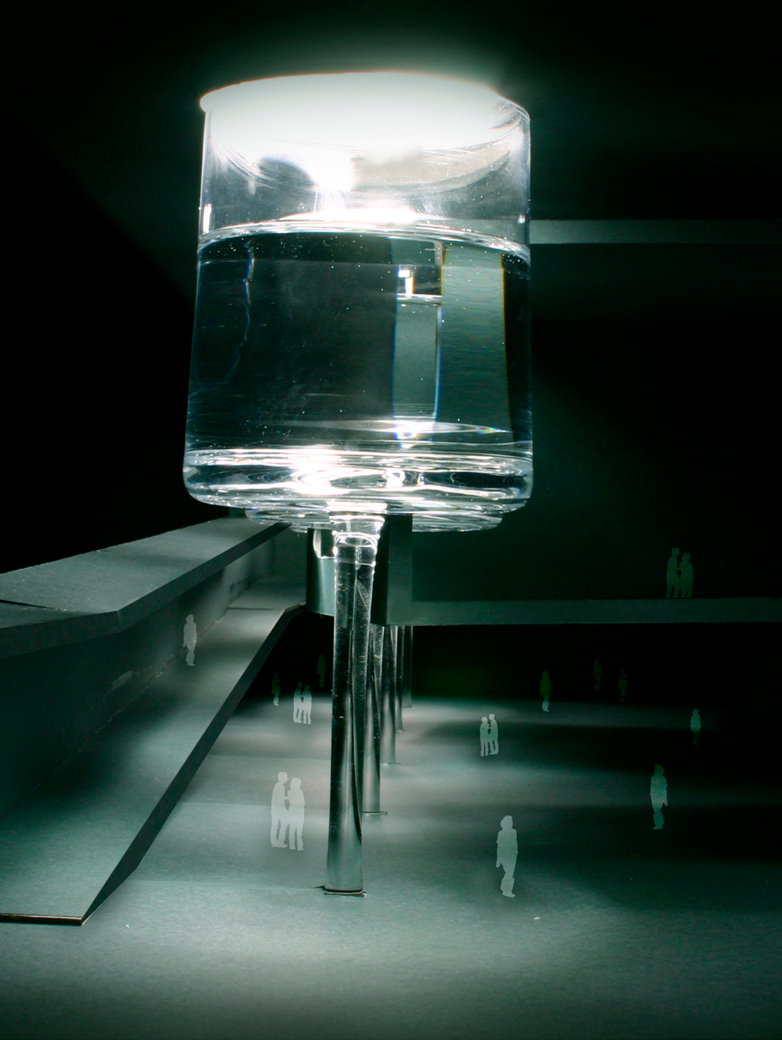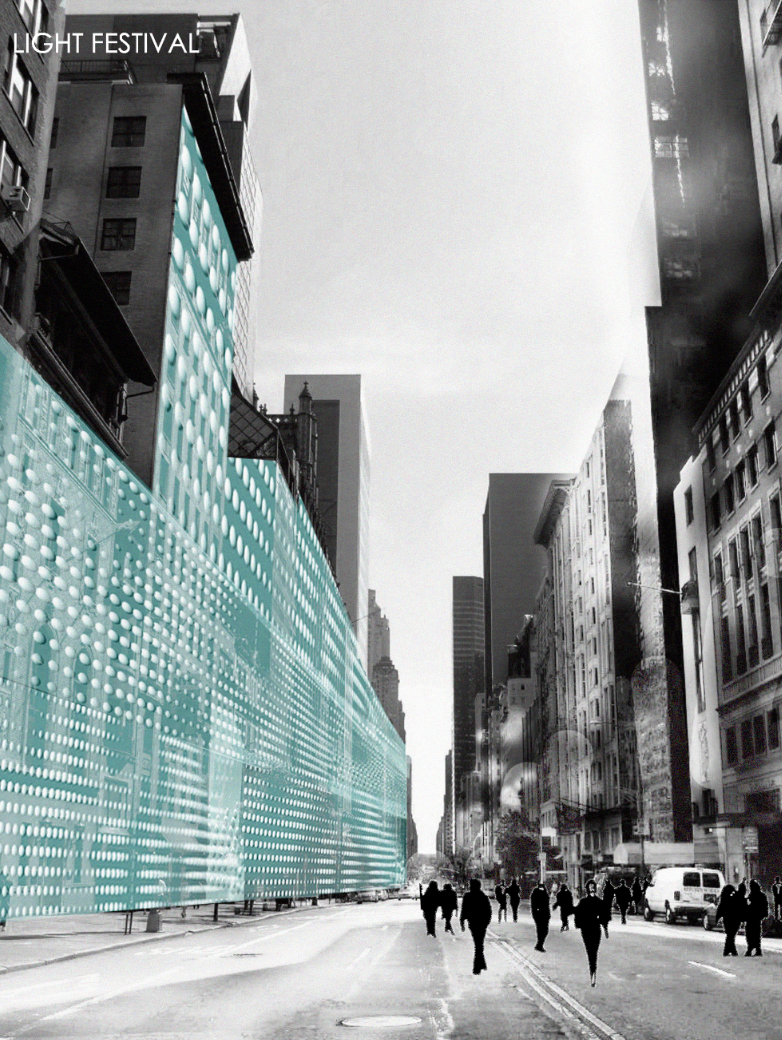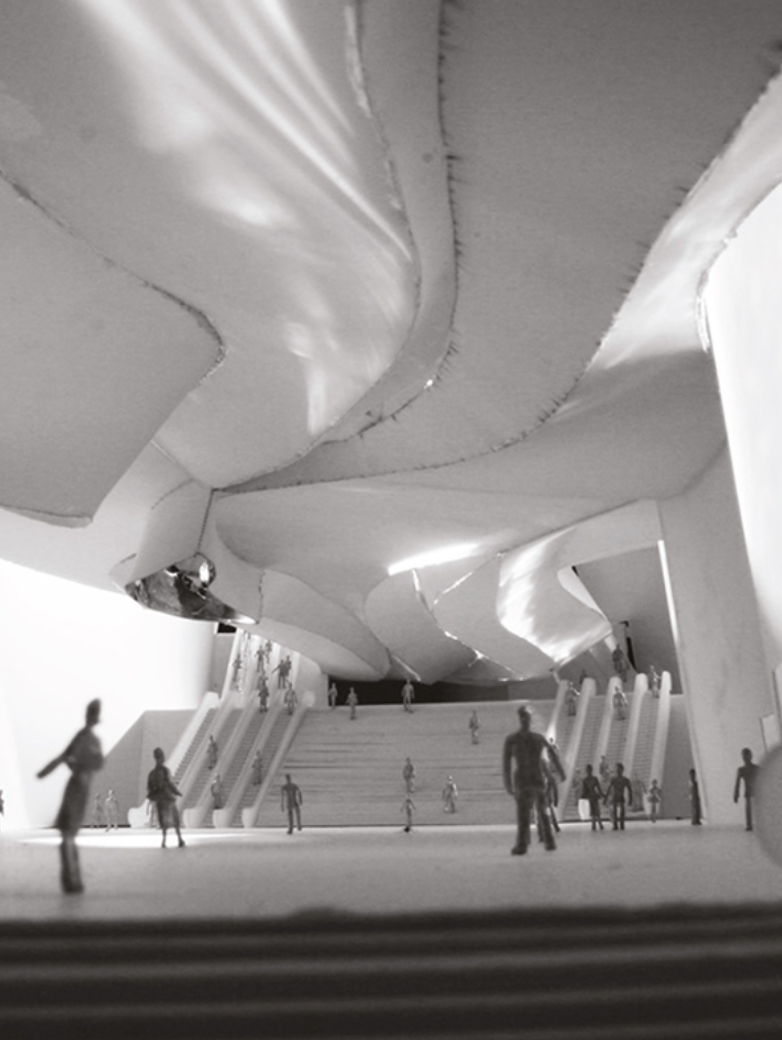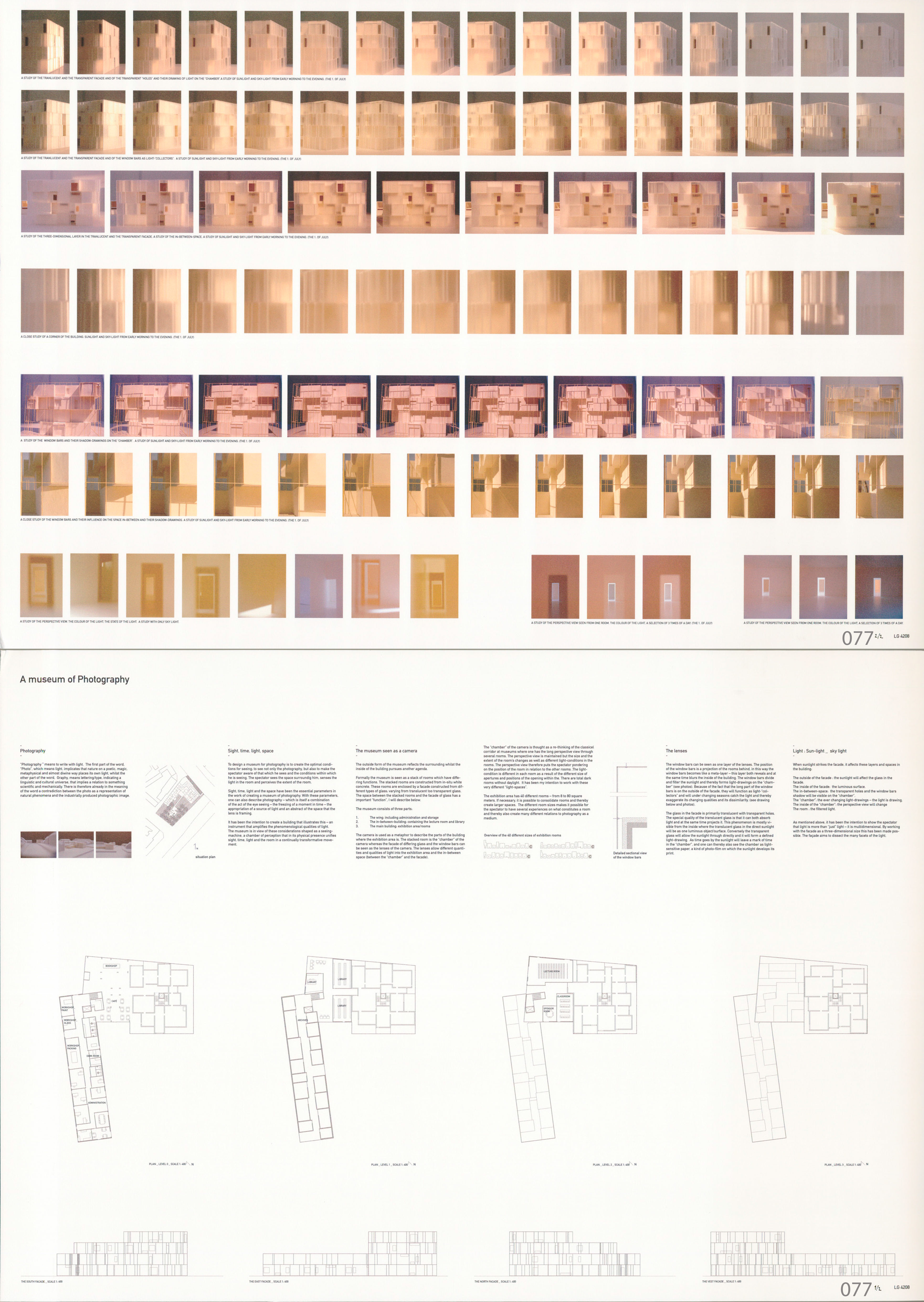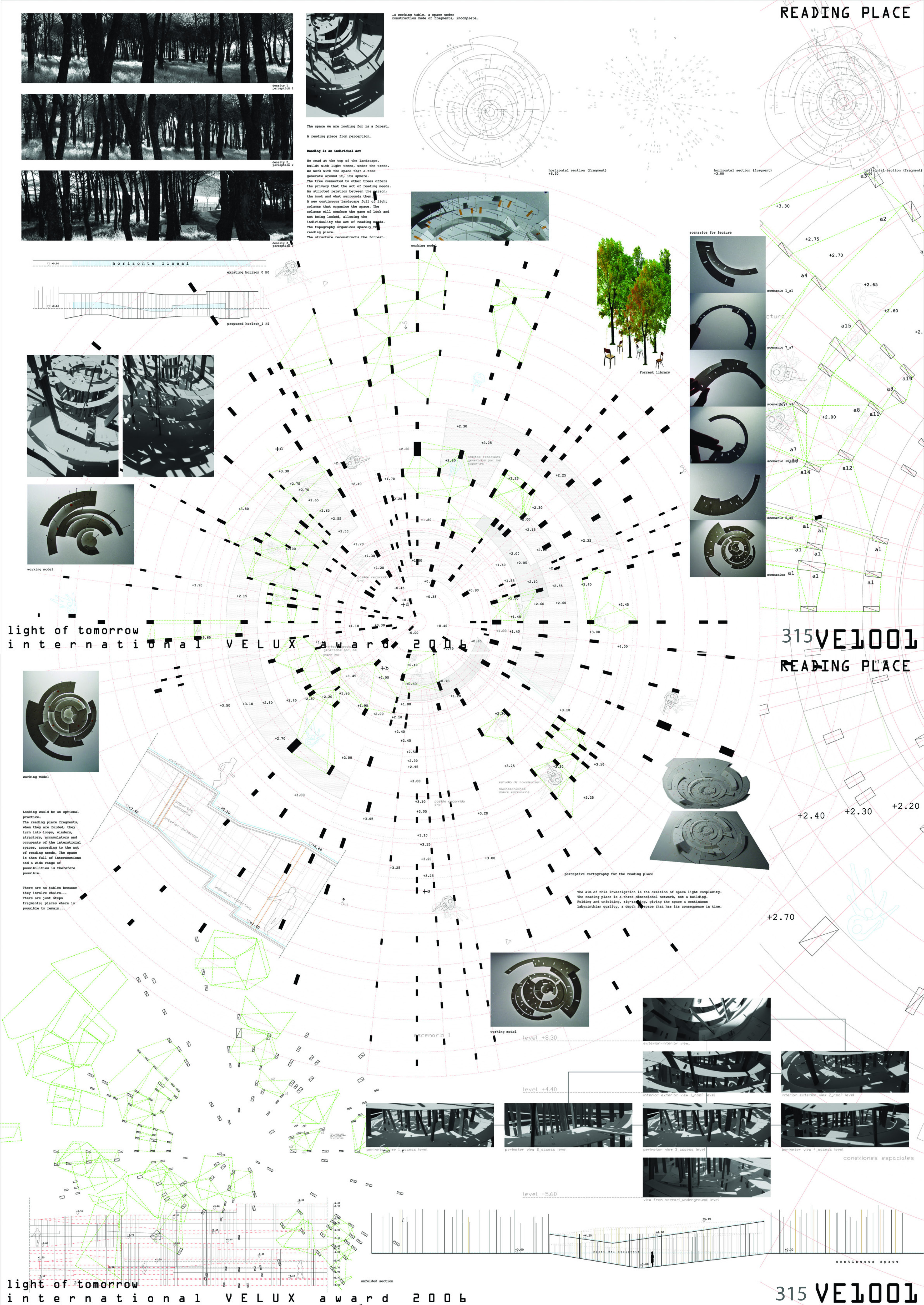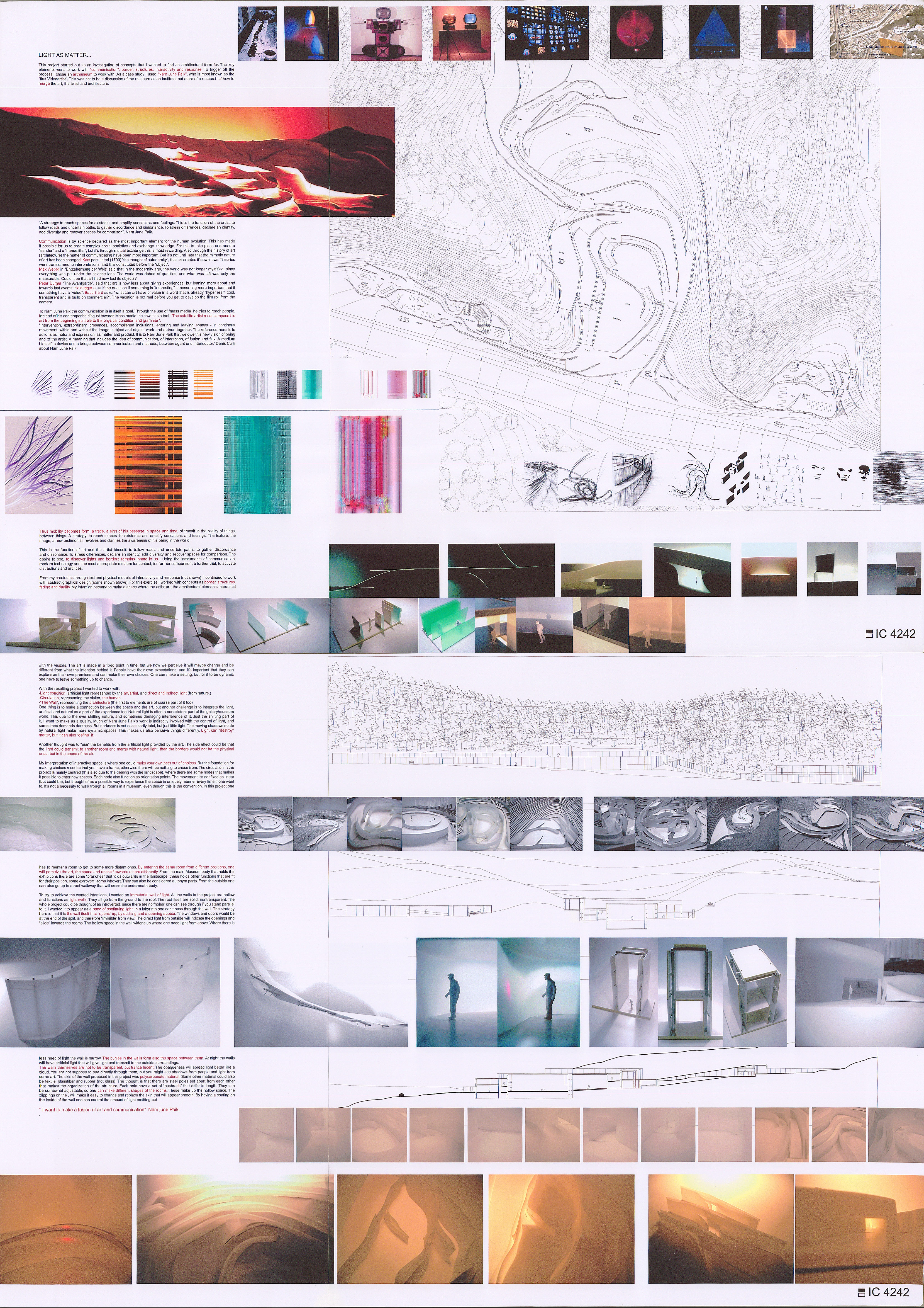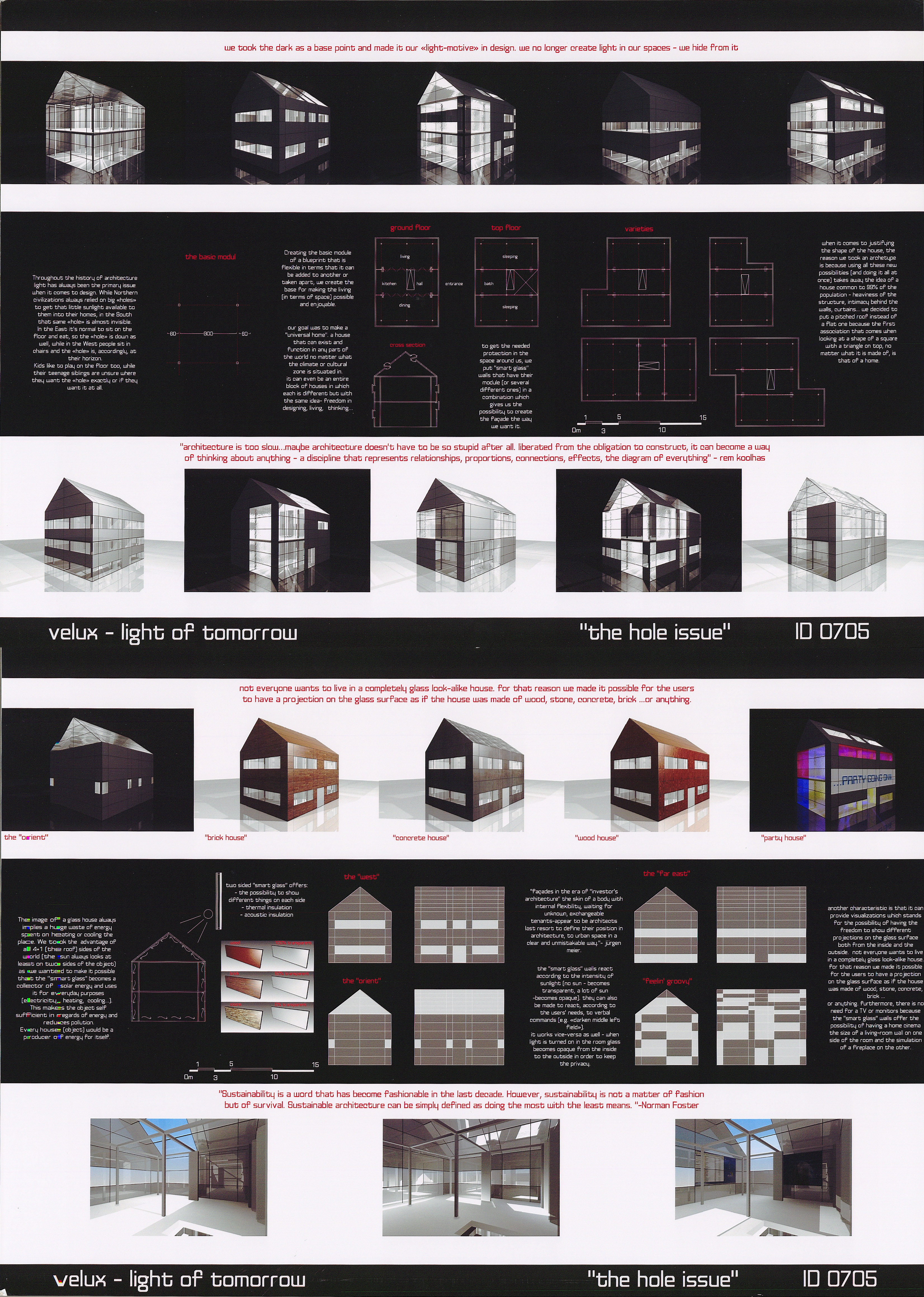2024 - Sunflux
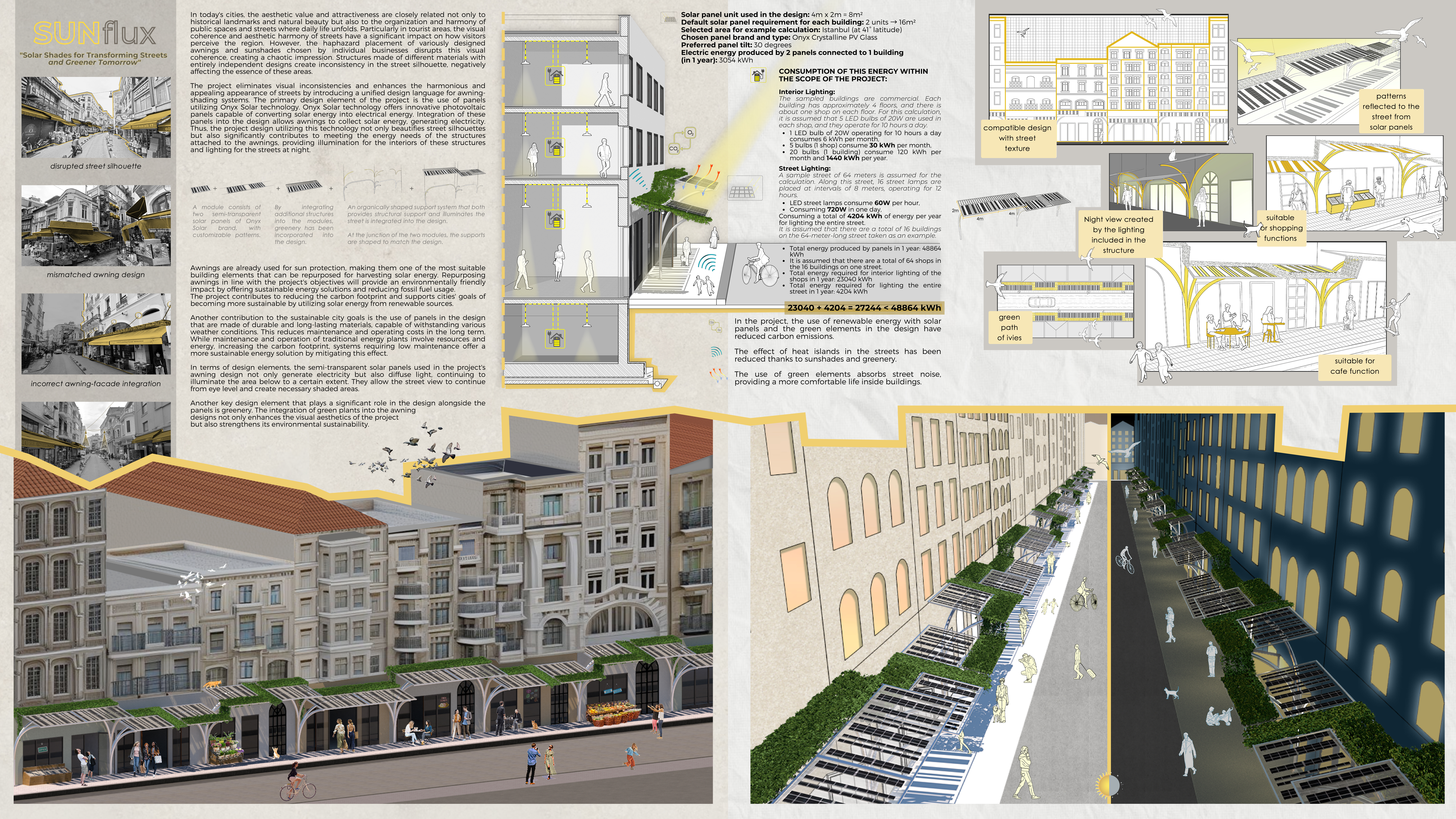
Category
Daylight Investigations - Region 2: Eastern Europe and the Middle East
Students
Damla Orhon & İlknur Yıldız
Teacher
Şensin Yağmur
School
Yildiz Teknik Üniversitesi
Country
Turkey
Download
Download project board
SUNFLUX
“Solar shades for transforming streets and greener tomorrow.”
In today’s cities, the aesthetic value and attractiveness are closely related not only to historical landmarks and natural beauty but also to the organization and harmony of public spaces and streets where daily life unfolds. Particularly in tourist areas, the visual coherence and aesthetic harmony of streets have a significant impact on how visitors perceive the region. However, the haphazard placement of variously designed awnings and sunshades chosen by individual businesses disrupts this visual coherence, creating a chaotic impression. Structures made of different materials with entirely independent designs create inconsistency in the street silhouette, negatively affecting the essence of these areas.
The project eliminates visual inconsistencies and enhances the harmonious and appealing appearance of streets by introducing a unified design language for awning-shading systems. The primary design element of the project is the use of panels utilizing Onyx Solar technology. Onyx Solar technology offers innovative photovoltaic panels capable of converting solar energy into electrical energy. Integration of these panels into the design allows awnings to collect solar energy, generating electricity. Thus, the project design utilizing this technology not only beautifies street silhouettes but also significantly contributes to meeting the energy needs of the structures attached to the awnings, providing illumination for the interiors of these structures and lighting for the streets at night. This system not only enhances energy efficiency to alleviate businesses’ economic burden but also contributes to environmental sustainability.
Awnings are already used for sun protection, making them one of the most suitable building elements that can be repurposed for harnessing solar energy. Repurposing awnings in line with the project’s objectives will provide an environmentally friendly impact by offering sustainable energy solutions and reducing fossil fuel usage. Fossil fuels emit carbon dioxide (CO2) and other greenhouse gases when burned, thereby increasing the carbon footprint. Solar energy, on the other hand, is environmentally friendly as it does not emit these gases. The project contributes to reducing the carbon footprint and supports cities’ goals of becoming more sustainable by utilizing solar energy from renewable sources.
Another contribution to the sustainable city goals is the use of panels in the design that are made of durable and long-lasting materials, capable of withstanding various weather conditions. This reduces maintenance and operating costs in the long term. While maintenance and operation of traditional energy plants involve resources and energy, increasing the carbon footprint, systems requiring low maintenance offer a more sustainable energy solution by mitigating this effect.
Additionally, a benefit of harnessing solar energy is its contribution to reducing the urban heat island effect. Photovoltaic awnings protect ground floors of buildings from direct sunlight, helping to keep indoor spaces cooler. This shading effect reduces the use of air conditioning and cooling systems, thereby decreasing energy consumption and, consequently, carbon emissions. This contribution to reducing the urban heat island effect helps make urban environments more livable.
In terms of design elements, the semi-transparent solar panels used in the project’s awning design not only generate electricity but also diffuse light, continuing to illuminate the area below to a certain extent. They allow the street view to continue from eye level and create necessary shaded areas.
Another key design element that plays a significant role in the design alongside the panels is greenery. The integration of green plants into the awning designs not only enhances the visual aesthetics of the project but also strengthens its environmental sustainability. Aesthetically, the addition of green plants to the awning designs adds a natural charm to street views. In urban areas dominated by concrete and metal, the abundance, vitality, and continuity of green plants along the streets bring freshness and a lively atmosphere to the streets. Additionally, the use of green plants has positive environmental effects on the project. Plants absorb carbon through photosynthesis, reducing atmospheric carbon dioxide levels and producing oxygen. This contributes to improving air quality and mitigating the urban heat island effect, thereby preventing temperature increases in cities.
The implementation of such projects can raise awareness about renewable energy in society and encourage similar initiatives. This widespread impact contributes to further reducing the overall carbon footprint. The increasing awareness of green energy represents a significant step towards a more sustainable future.
In conclusion, awning-sunshade systems with a unified design language developed using solar panel technology not only enhance street silhouettes but also make significant contributions to environmental sustainability by utilizing renewable energy sources. This project not only ensures aesthetic coherence but also reduces energy costs. Furthermore, it offers extensive benefits such as reducing fossil fuel usage, decreasing the carbon footprint, and fostering public awareness. This innovative solution, characterized by longevity and low maintenance, provides an eco-friendly response to urban energy needs while offering significant advantages in terms of aesthetics and functionality.
